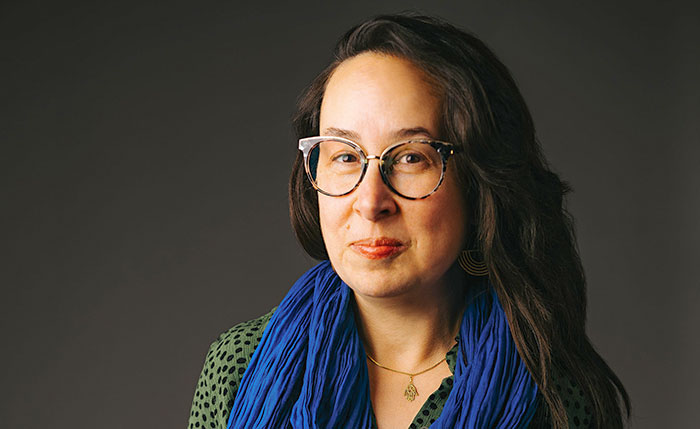KGI student finds help, and helps others with rare disease
A little over a decade ago, 28-year-old Stacy Crawford was diagnosed with Behcet’s disease, a rare autoimmune disorder often characterized by ulcers and inflammation in painful, spontaneous flare-ups. She spent 10 days in the hospital with her initial outbreak as doctors struggled to diagnose her. Feeling alone in her struggle, Ms. Crawford vowed to one day help others facing similar strife.
With her leadership in a recent research project at Claremont’s Keck Graduate Institute of Applied Life Science (KGI), the Master of Science student has found her moment.
Through KGI’s Center for Rare Disease Therapies (CRDT), Ms. Crawford and classmates have found an alternative drug, pentoxifylline, to help treat patients with Behcet’s disease. After filing an application for the drug last spring, the KGI colleagues have received notice from at least one pharmaceutical company interested in marketing the drug for Behcet’s patients.
“I have always wanted to reach out, but didn’t know how,” Ms. Crawford said. Her group’s research, supported by the American Behcet’s Disease Association, has provided her with an outlet. “I didn’t think I would ever be able to have this opportunity.”
Their research began last fall as part of a class offered by Professor and Director of CRDT Ian Phillips. The semester-long class teaches students how to write and submit applications for orphan drugs—medications used to treat rare medical conditions—to various pharmaceutical companies. In 1983, President Reagan signed an act that would provide incentives for companies to commercialize these orphan drugs, and Mr. Phillips’ class and the CRDT furthers that mission: making medication for rare diseases more readily available.
“There are a lot of perfectly safe, unused drugs out there that could be used for treating rare diseases,” Mr. Phillips said. “[Pentoxifylline] is a very nice discovery by Stacy and her colleagues. It has been used in the past without any toxicology problems and can be adapted to Behcet’s patients.”
“Of course, it also helps to have an authority on Behcet’s,” he added.
Knowing the harsh reactions to many of the drugs used to treat Behcet’s, Ms. Crawford was eager to explore and advocate medication options that presented fewer side effects as a part of her class research.
“The first line of therapy [for Behcet’s] is usually steroids, which you can’t take long-term and have pretty bad side effects,” she said. “Finding a drug with minimum side effects was definitely important.”
Ms. Crawford came across pentoxifylline while browsing the website for the American Behcet’s Disease Association. Though pentoxifylline is typically used as a generic anti-inflammatory medication, case studies have shown its success in treating Behcet’s, according to Ms. Crawford.
“We looked at many other drugs, but pentoxifylline seemed to be the best,” she said. “It stood out because the standard mechanisms were so different than your typical steroid. [Pentoxifylline] had the least amount of side effects.”
With the right drug identified, Ms. Crawford and her classmates set to work preparing an application for submission to pharmaceutical companies. The workload, between the research and perfecting the application, proved to be more than the team had planned, according to Ms. Crawford. At the end of the semester, MC and her teammates did not want to put the unfinished work aside, so they applied for an independent study course to continue the project the following spring.
The extra effort was worth it and Ms. Crawford is living proof of the project’s success. Ms. Crawford has been taking the drug for the past 3 months and has yet to see a flare up, which for her usually occur every 6 weeks.
“It’s like a miracle so far,” she said.
In addition to finding a new and improved way of dealing with her own Behcet’s, Ms. Crawford feels she is finally finding her outlet to helping others. Once seemingly alone in dealing with her disease, she is now receiving an abundance of correspondence from other people with Behcet’s.
“Those with Behcet’s are few and far between. A lot of the times you feel like you are alone, like no one is reaching out to help you,” Ms. Crawford said. “Now I have the chance to reach out and help others.”
—Beth Hartnett
news@claremont-courier.com










0 Comments